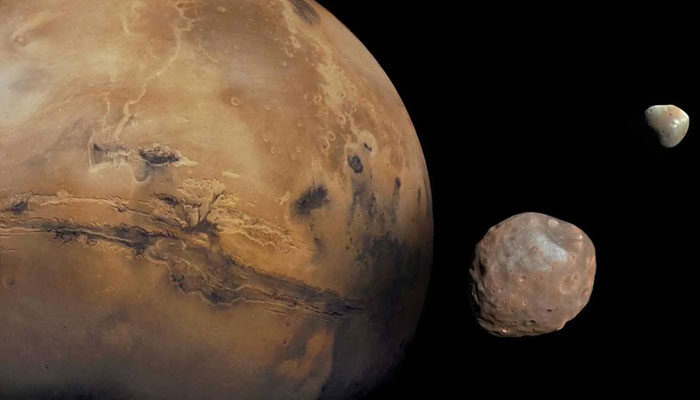
Mars’s moons Phobos and Deimos are likely to have been formed from the debris created at the time when a large asteroid wandered dangerously close to it, as per the suggestion by computer simulations.
According to the proposal of this new model, Phobos and Deimos resulted from the wreckage of a larger asteroid that wandered too close to Mars and crossed its Roche limit, reported Space.com.
It is also worth noting that the Roche limit was the distance at which gravitational tidal forces emanating from the planet became too great and tore the asteroid apart.
"It's exciting to explore a new option for the making of Phobos and Deimos — the only moons in our solar system that orbit a rocky planet besides Earth's," said Nasa Ames Research Centre’s Jacob Kegerreis.
The moons of Mars are not easy to explain. Both are small — Phobos is 16 miles (26km) across at its widest point, whereas, Deimos is just 10 miles (16km) — and lumpy. This makes them look like captured asteroids.
However, around their new parent planet, objects captured in orbit tend to have elongated, inclined and sometimes retrograde trajectories.
Neptune's moon Triton, or Saturn's moon Phoebe are good examples.
Moreover, Phobos and Deimos have neatly circular orbits aligned with Mars' equatorial plane. This makes it seem more likely if they had formed in orbit around Mars.












